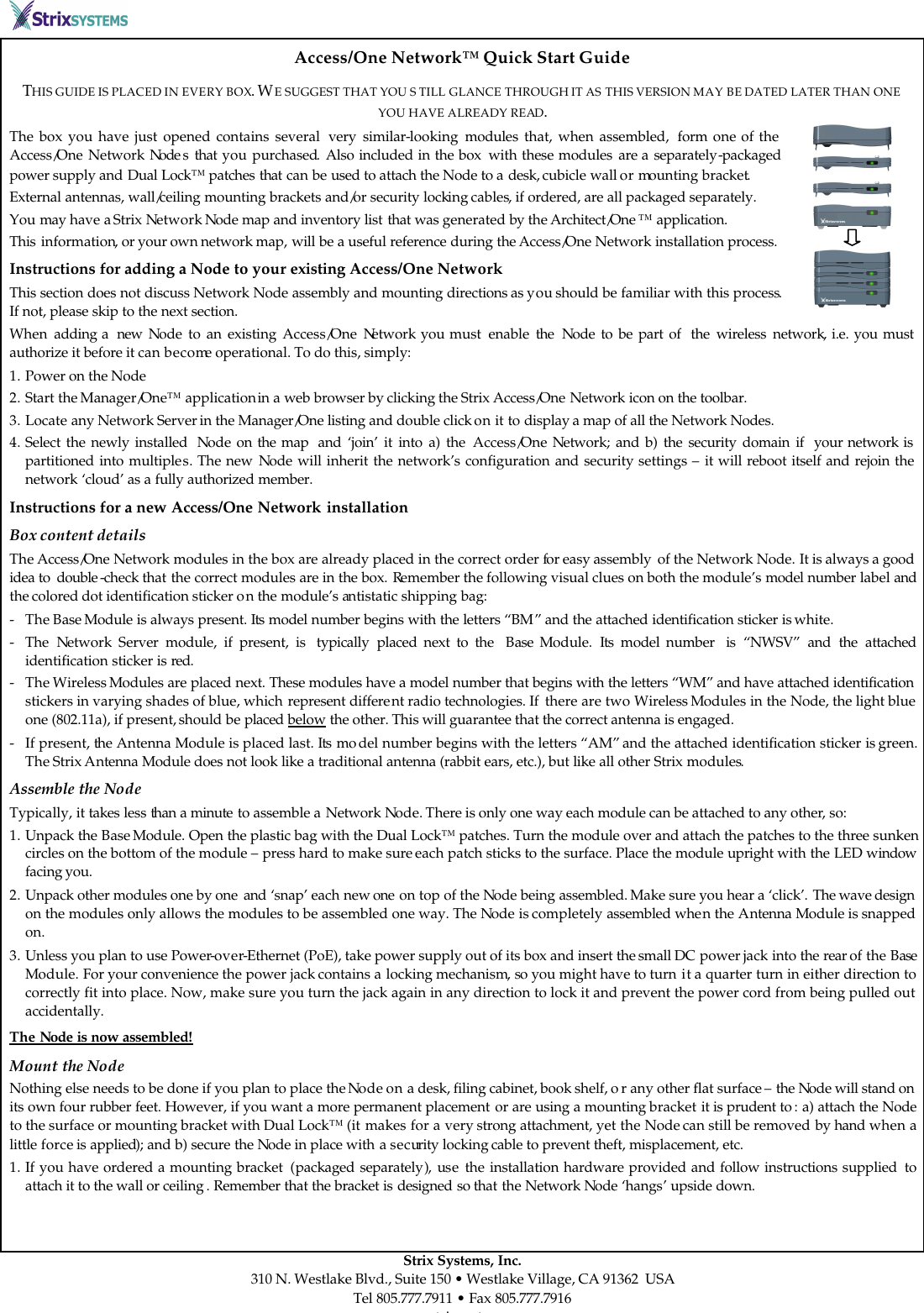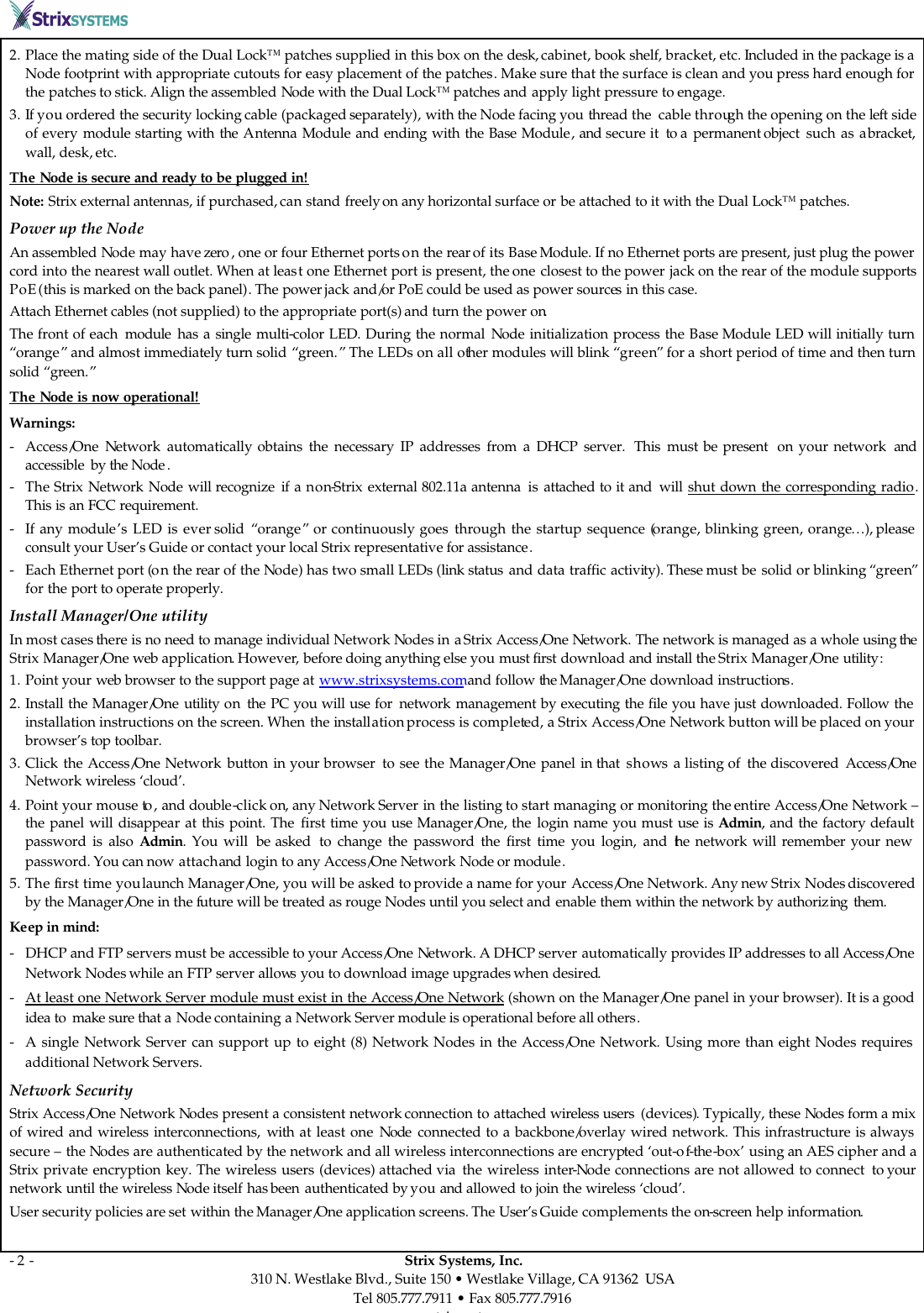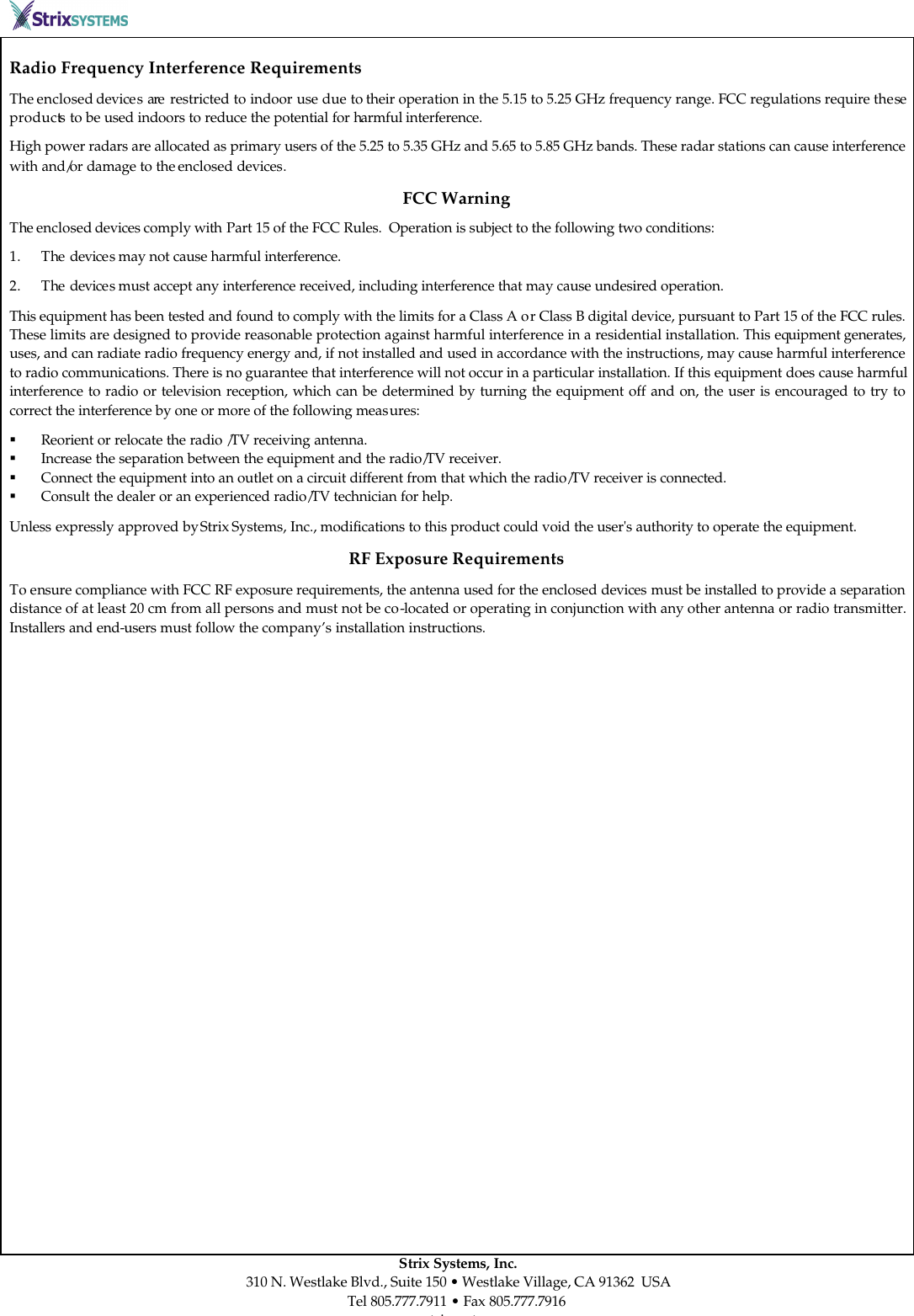Strix Systems ACCESS-ONE 802.11 a/b/g Wireless Access Point User Manual Quick Start DE
Strix Systems, Inc. 802.11 a/b/g Wireless Access Point Quick Start DE
Contents
- 1. Access One Quick Start Guide
- 2. AccessOne Network User Guide
- 3. Owners Manual
Access One Quick Start Guide


